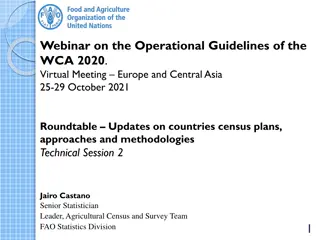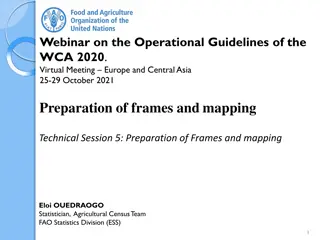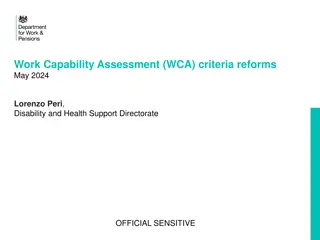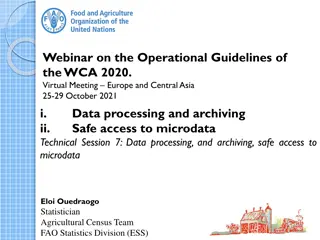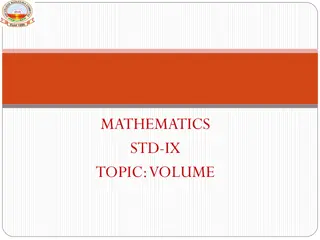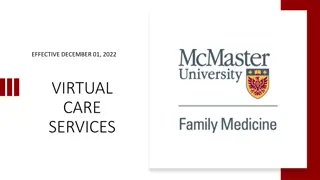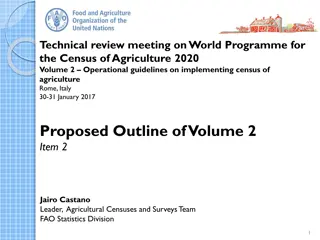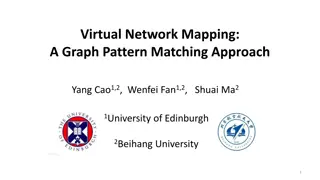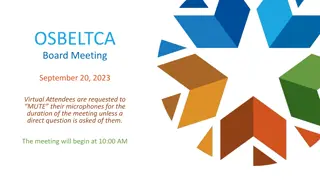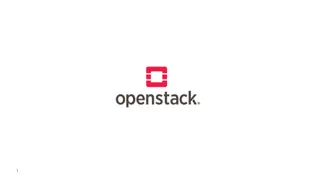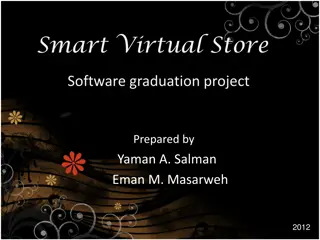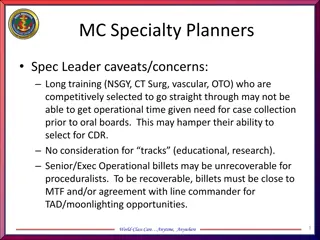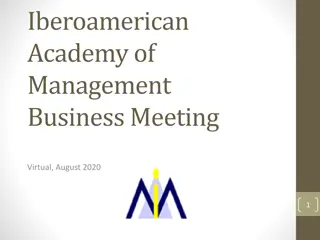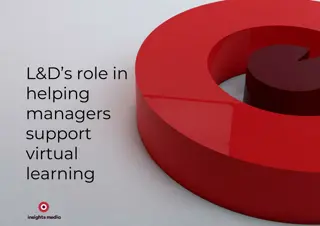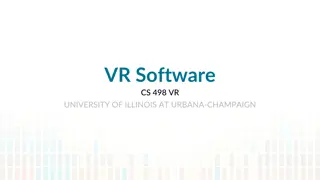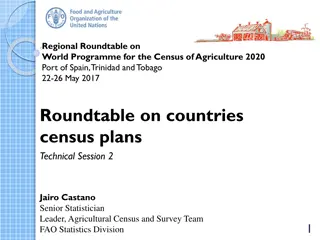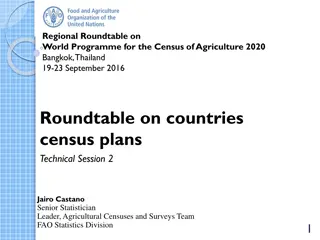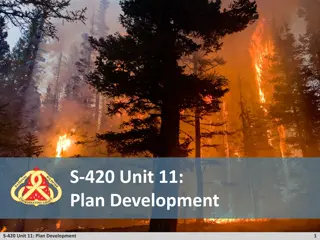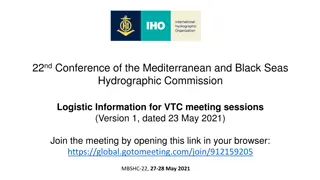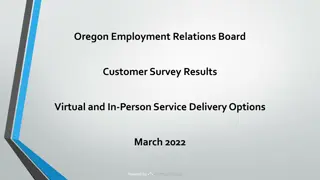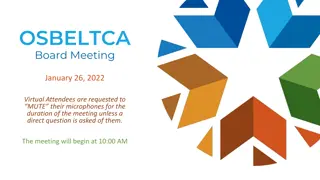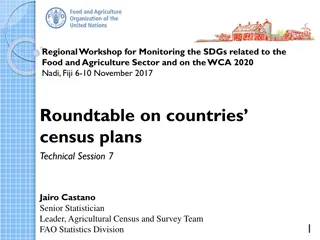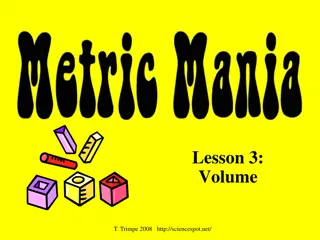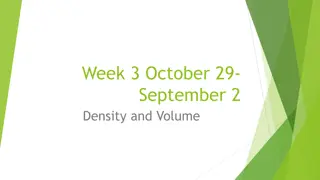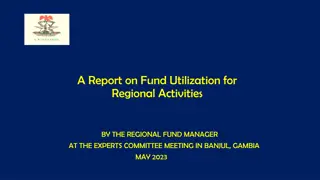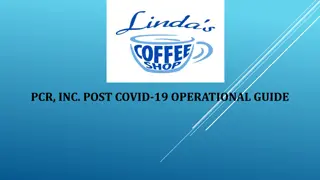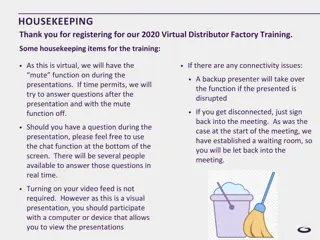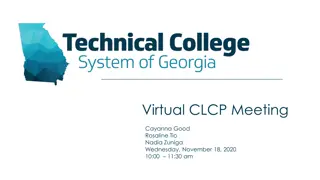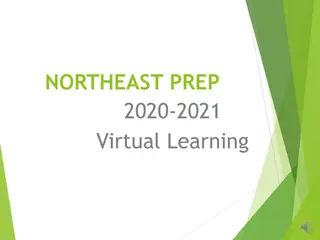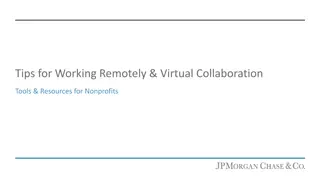Operational Guidelines of WCA 2020 Virtual Meeting: Overview of Volume 2
FAO's World Programme for the Census of Agriculture (WCA) provides technical guidelines and support to member countries. The Operational Guidelines for WCA 2020, outlined in this webinar, cover planning, methodology, preparation, and implementation. Updates in methodology and technology are highlighted, emphasizing a user-friendly and practical approach, with resources available in multiple languages.
Download Presentation

Please find below an Image/Link to download the presentation.
The content on the website is provided AS IS for your information and personal use only. It may not be sold, licensed, or shared on other websites without obtaining consent from the author. Download presentation by click this link. If you encounter any issues during the download, it is possible that the publisher has removed the file from their server.
E N D
Presentation Transcript
Webinar on the Operational Guidelines of the WCA 2020 Virtual Meeting Europe and Central Asia 25-29 October 2021 Overview of Volume 2 Operational Guidelines of the WCA 2020 Technical Session 1 Jairo Castano Senior Statistician Leader, Agricultural Census Team FAO Statistics Division 1
Contents 1. Background 2. What s new? 3. Steps in developing/conducting the AC 4. Structure of the Operational Guidelines 5. Part 1: Planning 6. Part 2: Methodology 7. Part 3: Preparation and implementation 8. Final remarks 2
Background of the WCA FAO is the leading UN agency for providing technical guidelines and support to member countries for the conduct of national censuses of agriculture. Since 1948, FAO has developed a dedicated decennial World Programme that helps countries carry out their national censuses on agriculture. The World Programme for the Census of Agriculture (WCA) is updated every 10 years to build countries capacities in the use of the most recent standards and methods to gather agriculture-related statistics. 3
Background (contd) In 2015, FAO published its 10th decennial WCA 2020 Programme, concepts and definitions . It provides methodological guidelines to agricultural censuses to be undertaken between 2016 and 2025. In 2018, FAO published Vol 2 - Operational Guidelines the practical aspects. The Operational Guidelines provides practical guidance to national census practitioners on the stages/steps involved in census preparation and implementation. 4
Whats new? Since the publication of a similar book in 1996, there have been substantial methodological and technological developments. Methodological: the modular approach, the integrated census & survey modality, and the use of registers as a source of census data. Technological: more affordable tools for data capture (mobile, online), census planning (digital frames, geo-referencing, remote sensing imaging), archiving (digital preservation SDMX complaint) and online dissemination (dynamic tables, infographics) provide cost- effective alternatives to traditional ways. The Operational Guidelines takes into account these game changers. The publication is user-friendly and practical. It provides cross- references between sections, links to country practices, and hyperlinks to Web-based resources created specially for this book. A USB version of the Operational Guidelines, including resources, is enclosed in the front cover pocket of the book. Available in six languages. The English http://www.fao.org/3/CA1963EN/ca1963en.pdf version is available at 5
Steps in planning & conducting a CA Processing, Analysis, Publication Field Work Design and Planning 6
1. Structure of the Operational Guidelines The steps and associated activities illustrated before are described in the book in 25 different chapters organized in three parts: Part 1 covers the planning of the census and the necessary framework. Part 2 relates to the methodology for the census of agriculture, their main issues and suggested solutions. Part 3 refers to implementation of the census. the preparation and 7
Structure: Part 1 - Planning Part 1 starts emphasizing the need to carry out the census of agriculture not in isolation but as a component of an integrated system of agricultural censuses and surveys. This precondition ensures that the census can be focused on a coherent and manageable set of items given that other (non-structural) items needed more frequently are available elsewhere (surveys, registers). Then, the importance, uses and relevance of the census in the development policy agenda is discussed. A new feature is a guidance on how to demonstrate the benefits (both qualitative and quantitative) of the census to make a convincing case for its funding. This seeks to help census authorities to make a good case with national decision-makers and resource partners on why they should fund the census and ensure value for their money. Part 1 ends discussing the preparation of the census legislation, the institutional framework, the elaboration of a work plan and the associated budget. Other planning activities include the communication and publicity strategy and the quality assurance framework to prevent and minimize potential errors at all stages. 8
Structure: Part 2 - Methodology Part 2 discusses the implementation aspects of the four census methodological modalities presented in WCA 2020: a. the classical approach (a single one-off field operation); b. the modular approach (a core module followed by sample-based supplementary modules); c. the integrated census and survey modality (a core census module followed by sample-based rotating modules); d. the use of registers as a source of census data. It discusses, for each census modality, the implementation steps, timing, requirements, advantages and limitations. This is illustrated with country experiences to help countries select and implement the modality most suitable, taking into account the statistical and technological development of each country. 9
Structure: Part 3 Preparation and implementation Part 3 is devoted to the preparation of census fieldwork and implementation of data collection, processing, analysis and dissemination activities. The discussion on fieldwork activities covers the building of frames, the growing use of digital maps, elaboration of questionnaires selection of staff, training, pretests, pilot census, listing operation and data collection (PAPI, CAPI, CAWI, etc.). The use of new technology and tools (such as tablets, Web questionnaires, Global Positioning Systems and remote sensing) is also examined. and manuals, 10
Structure: Part 3 Implementation (contd) Part 3 also addresses census data processing and archiving, which depend on the communication technology (ICT) capacity. The issue of access to agricultural census microdata (preserving confidentiality) is strongly advocated as it increases the relevance and value of the census. The Post-Enumeration Survey (PES) is promoted as a good practice to evaluate the accuracy of the data collected. The preparation and dissemination of census reports is then discussed, including user-friendly methods (e.g. online reports, social media releases, infographics, interactive maps and anonymized microdata). The book ends discussing the reconciliation of discrepancies between previously published estimates (e.g. from surveys) and the results of the new census. information and country s 11
Final remarks The new Operational Guidelines is available in six languages (English, French, Spanish, Chinese, Russian and Arabic) and also online (including resources). FAO Statistics Division organized regional workshops in Near East, Latin America, Francophone Africa and Anglophone Africa in 2019-2020 to disseminate the new guidelines. More regional workshops resources. FAO hopes that countries find the new Operational Guidelines useful at every step of the way to plan and implement such a large and complex operation as the census of agriculture. depending on additional 12


